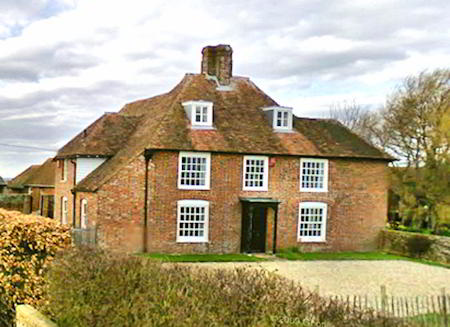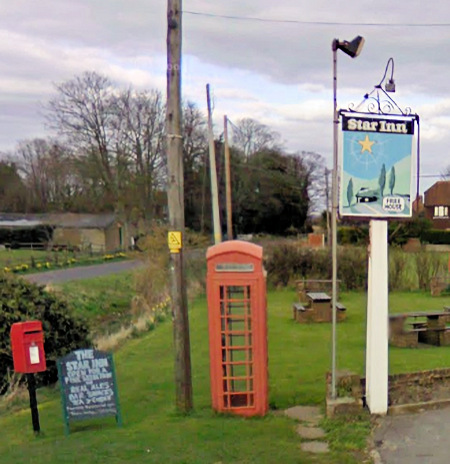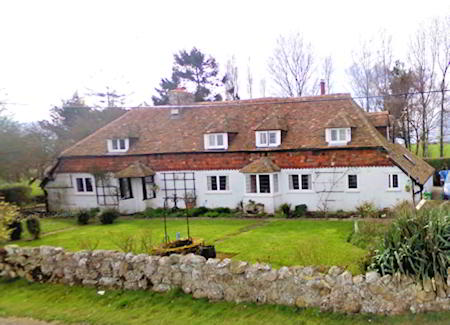St Mary in the Marsh Historic Buildings

Haffenden Farmhouse is located in Pickneybush Lane in St Mary in the Marsh.
The farmhouse originally built in about 1600. Its rear wing is mid 17th century and facade of mid-to-late 18th century, with early 19th century alterations. Timber framed, clad in red brick in Flemish bond with occasional grey headers.

Haffenden Farmhouse

The K6 Telephone Kiosk stands in a prominent location in the south west corner of St Mary in the Marsh. It is situated in the car park of the Star Inn (Grade II), and stands approximately 50m to the south of the Church of St Mary the Virgin (Grade I). Partly owing to the lack of other buildings in the vicinity, the kiosk has a very strong visual relationship with both the pub and the church.
The K6 telephone kiosk is a milestone of C20 industrial design. The K6 was designed by Giles Gilbert Scott in 1935 for the General Post Office, on the occasion of King George V's Silver Jubilee. The K6 was a development from his earlier highly successful K2 telephone kiosk design of 1924, of Neo-classical inspiration. The K6 was more streamlined aesthetically, more compact and more cost-effective to mass produce. Giles Gilbert Scott (1880-1960) was one of the most important of modern British architects; his many celebrated commissions include the Anglican cathedral of Liverpool and Battersea power station.
The K6 telephone kiosk in St Mary in the Marsh, Shepway, Kent, is designated at Grade II for the following principal reasons:
* It has a strong visual relationship with two listed buildings
* It stands in close proximity to a Grade I listed building
* It is a representative example within a village setting of this important C20 industrial design

K6 Telephone Kiosk

Well Cottage is located in St Marys Road on the outskirts of St Mary in the Marsh. Built originally built in the 16th or early 17th century as cottages, it is now a house.
Thought to have been a Poor House. There were additions to the property in the 19th century. It is painted brick with strip of tile hanging beneath eaves. Plain tile roof, formerly thatched. 1½ storeys. Hipped roof. Red and grey brick ridge stack towards left end and rear stack towards right end.
It was home to stage and film actress Victoria Hopper and secong husband fellow actor Peter Walter.

Well Cottage



















